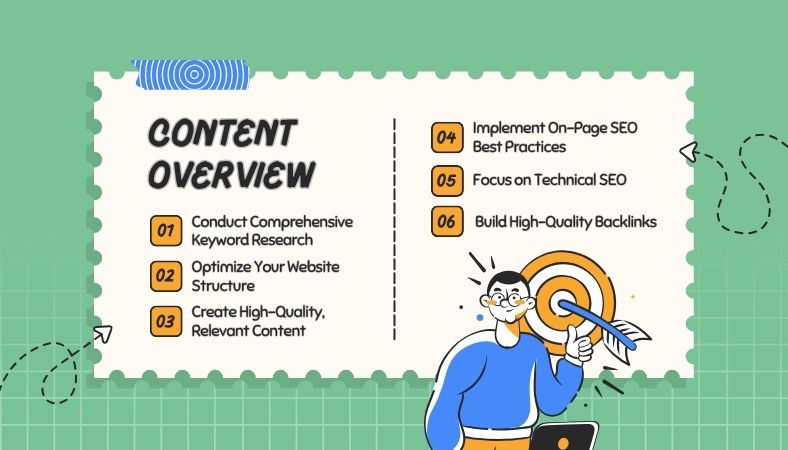Introduction of SEO vs SEM
In 2025, when things move quickly online, businesses have a lot of problems with being seen online. Search Engine Optimization (SEO) and Search Engine Marketing (SEM) are two important phrases that come up a lot in talks about digital marketing. Even though people often use these words to mean the same thing, they actually refer to separate strategies with different goals, methods, and results. A company may greatly improve its online marketing by learning the differences between SEO and SEM. This will bring in more visitors, raise brand awareness, and boost conversion rates.
This post will go into further detail about the main distinctions between SEO and SEM, including how each one works, its pros and cons, and when to utilize each one. By the end, you’ll have a better idea of how to use these strategies in your digital marketing plan to keep your firm ahead in an online world that is getting more and more competitive.
1. What is SEO, or “Search Engine Optimization”?
SEO is the process of making a website or online content better so that it shows up higher in search engine results pages (SERPs) without paying for it. It means making changes to both the on-page and off-page parts of a website to make it more visible and useful for specific keywords.
Important parts of SEO are:
- On-page SEO is making your website’s content, structure, and meta-data better. This includes things like title tags, headers, and how you use keywords.
- Off-page SEO is the use of tactics outside of your website to make it more trustworthy. Examples include getting backlinks and getting people to interact with you on social media.
- Technical SEO is making the back end of your website better, such as making it faster, more mobile-friendly, and more secure (HTTPS).
Advantages of SEO:
- Traffic from search engines over time.
- Users have more faith and trust in it.
- No direct charges for clicks or views.
- More authority for the website.
2. What is SEM (Search Engine Marketing)?
Paid search advertising, or SEM, is when you pay for ads to show up on search engine results pages, mostly Google Ads. SEM, on the other hand, gives you quick visibility in search results but costs money.
Important parts of SEM:
- Pay-Per-Click (PPC): Advertisers pay every time someone clicks on their ad. The most common platform for SEM is Google Ads.
- Ad Copy and Landing Page Optimization: In SEM, it’s really important to make sure that the ads and their landing pages are set up to get people to buy.
- Bid Management: Choosing the proper bid for your advertising so that they show up for the right keywords at the best price.
Advantages of SEM:
- Traffic and visibility right away.
- You have full control over targeting (for example, location, device, and time of day).
- Results that are easy to measure and follow.
- The ability to change the size of your campaigns.
3. The main differences between SEO and SEM
Both SEO and SEM are meant to make a website easier to find in search engines, but they do it in very different ways. Let’s look at the main differences:
PartSEO and SEM: SEO is free (for organic traffic)Paid (cost per click or impression)
TimeframeResults: over a long period of time (months)Results in the short term (immediate)
Long-term viability: Lasts for a long timeNeeds money to be spent on it all the time
Source of traffic: Results from organic searchAds that you pay for
TargetingBroad: (based on optimizing keywords)Very specific (place, age, etc.)
4. When to Use SEO and SEM
A good digital marketing plan needs both SEO and SEM, but knowing when to focus on one over the other can make a big difference.
When to Use SEO:
- When you want to get traffic that lasts for a long time.
- When your website has a lot of material that can rank naturally.
- When you want your audience to trust and believe in you.
When to Use SEM:
- When you need to see and get traffic right now.
- To advertise events or deals that are time-sensitive.
- When trying out fresh keywords or reaching out to certain groups of people.

5. How Keywords Work in SEO and SEM
Keywords are the most important part of both SEO and SEM, but they are used in different ways in each.
- In SEO, the goal is to find and use the most useful and relevant keywords in your content. Search engines will see your site as an authority on certain terms over time.
- In SEM, people bid on keywords so that their advertising show up. The cost of any keyword depends on how many people are searching for it, how relevant it is to the target audience, and how much competition there is for it.
Here are some best practices for using keywords:
- In SEO, make sure that keywords are naturally included in the body text, titles, meta descriptions, and URLs.
- In SEM, you should look for keywords that do well and write ad copy that speaks to your target audience.
6. Cost Comparison: SEO vs. SEM
One of the biggest differences between SEO and SEM is how much they cost. SEO can be free, while SEM requires you to spend money directly. This is how they stack up in terms of cost-effectiveness:
- SEO: Setting up your site for search engines can cost money at first (for things like content production, technical SEO, and maybe even a dedicated team), but there are no ongoing expenditures to keep your site ranked. The cost is an investment that will pay dividends in the long run.
- SEM: You have to keep spending money on SEM because you pay for every click or impression. But it gives you faster results and lets you regulate your budget, so you only pay for the traffic that fits your targeted parameters.
7. How to Tell if SEO or SEM is Working
Both techniques need to measure performance, but the ways they do so are different.
- In SEO, important indicators are organic traffic, keyword ranks, bounce rates, and conversion rates from organic sources.
- In SEM, important numbers are cost-per-click (CPC), click-through rate (CTR), conversion rate, and return on ad spend (ROAS).
You should keep an eye on both SEO and SEM on a frequent basis to make sure your plans are working.
8. The Synergy SEO and SEM are two different things
Even though SEO and SEM are different tactics, they can work together to improve your online visibility as a whole. Here’s how combining the two can work:
- Better Visibility: Use SEM to get noticed fast while your SEO work starts to pay off.
- A/B Testing: With SEM, you may test ad wording and keywords to see how they affect your SEO approach.
SEO targets people who are looking into products or services, while SEM targets people who are ready to buy.

9. Things to avoid when doing SEO and SEM
To make sure that SEO and SEM work, stay away from these typical mistakes:
In search engine optimization:
- Stuffing keywords.
- Not paying attention to technical SEO problems like poor website speeds.
- Focusing on how many backlinks you have instead of how good they are.
In SEM:
- Bidding too much on pricey keywords without targeting them correctly.
- Not making landing pages work better for conversions.
- Not keeping track of and improving ongoing campaigns.
10. What will happen with SEO and SEM in the future
SEO and SEM change as search engines do. Here are some things to think about for 2025:
- Voice Search Optimization: As voice assistants like Siri and Alexa become more popular, it’s getting increasingly necessary to optimize for conversational keywords.
- AI and Automation: Tools powered by AI are making SEO and SEM work better by improving keyword targeting, ad creation, and content optimization.
- Video Content: As video becomes more popular, sites like YouTube are becoming a key part of both SEO and SEM tactics.
FAQs about SEO vs SEM
What is the most important distinction between SEO and SEM?
SEO is all about getting people to find your site through search engines, while SEM employs paid ads to get people to visit your site.
Which plan should I use for my business?
SEM is an excellent option if you need results right away. SEO works better for traffic that lasts a long time.
Is SEO free?
SEO doesn’t cost money for clicks, but it does take time and effort to make your site better.
Can SEO and SEM be used together?
Yes, using both tactics together can make you more visible and improve your overall performance.
How long does it take for SEO to work?
SEO is a long-term plan, and it could take a few months before you see big changes in your rankings and traffic.
Conclusion
In short, SEO and SEM are both important parts of a full digital marketing plan. You can get the most out of your online presence, traffic, and conversions by knowing the distinctions between them, when to use each one, and how they might function together. If you want long-term growth, you can use SEO. If you want rapid results, you can use SEM. Combining the two can give your firm a big boost in the competitive online marketplace.

